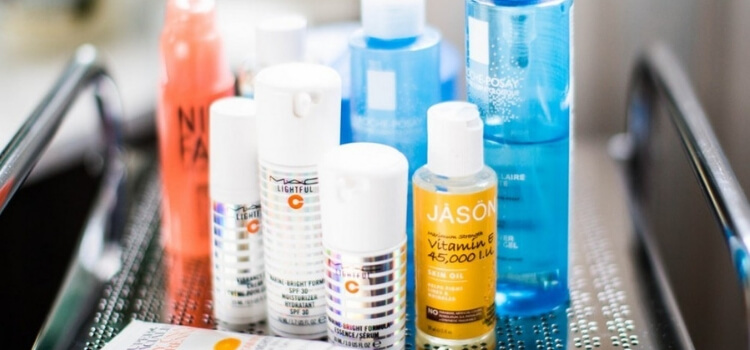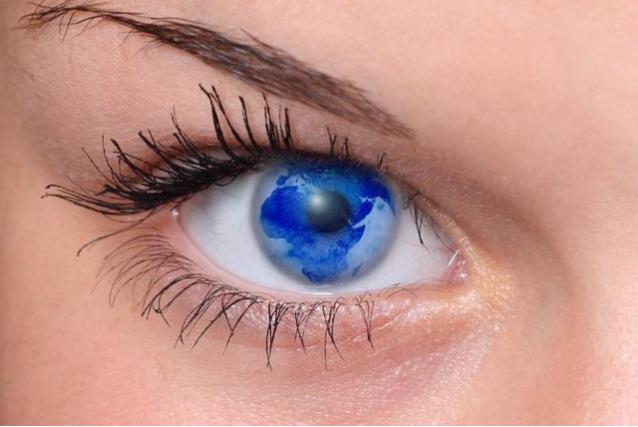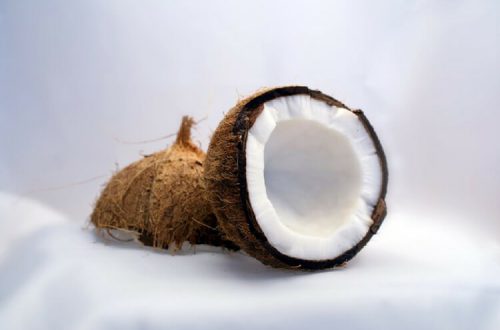
What Does Niacinamide do for the Skin
So, what does Niacinamide do for the skin and why has it become such a popular addition to many skin care products? In my quest to find the best products for the skin, especially those for anti-aging purposes, I’m repeatedly seeing the same top anti-aging skin care ingredients coming up again and again and one of those ingredients is Niacinamide which to me sounds more like the kind of thing you’d expect to find in a chemical weapon.
I’m not normally one for just following the masses and as such, I always like to know why I should be using certain things before jumping on the bandwagon. With that in mind, I decided to do some research into this very popular and somewhat scary sounding ingredient to find out why so many people are praising it and what exactly it can do.
What Is Niacinamide

Niacinamide, which is also known as nicotinamide or nicotinic acid is actually a form of vitamin B3 that is made from niacin. Niacin is only found in the body in small quantities so it must be sourced from food. It is converted into niacinamide when the body has more niacin than it actually needs. Both niacin and niacinamide are important for maintaining healthy cells and for cellular energy production.
A niacin deficiency can cause a disease called Pellagra which causes problems such as skin irritations like dermatitis, diarrhea and even dementia although it is much more uncommon now than it once was due to many foods being fortified with niacin. Niacin can be found in many foods such as fish, meat, yeast, milk, eggs, cereal grains, beans, and green vegetables.
What Can Topically Applied Niacinamide Do
It has been found that applying niacinamide topically can have many benefits when it comes to skincare and it can help with many skin related issues. It is often referred to as a cell-communicating ingredient which means that it actually tells cells to behave more like younger healthier ones. From an anti-aging point of view, that’s not something to be sniffed at.
Niacinamide is said to help improve the elasticity of the skin resulting in firmer, less saggy skin. It’s also said to help reduce the appearance of fine lines and wrinkles by stimulating the production of collagen which is the key component in maintaining younger firmer skin. It may also help with skin discolouration and uneven skin tone by lightening age spots and other areas of uneven pigmentation.
Niacinamide For Skin Dryness

Niacinamide has also been shown to help with excessive dryness by increasing the production of ceramides and fatty acids in the skin. This, in turn, enhances the skin’s protective barrier which protects the skin from water loss keeping the skin moist and hydrated. Enhancing the skin’s barrier also helps to keep it protected against bacteria and other environmental damage.
As well as boosting and helping to retain moisture, this skin restoring ingredient is also said to help reduce the appearance of enlarged pores as well as increasing cell turnover. Overall, this is a seriously multipurpose ingredient that can help with a multitude of anti-aging skin issues.
Use Of Niacinamide For Other Skin Conditions
As well as being considered as a seriously effective anti-aging ingredient, niacinamide may also be helpful with other skin related issues too because of its anti-inflammatory, water loss preventing and skin barrier improving properties. It has been found to be useful in helping to reduce the signs and symptoms of skin conditions such as acne, rosacea, and psoriasis.
Acne, in particular, is often caused by the excessive production of sebum along with the irregular shedding of dead skin cells. This often results in the clogging of hair follicles which leads to inflammation. Niacinamide has been found to reduce the production of facial sebum and when combined with its anti-inflammatory properties, it has been shown to be an effective treatment for acne-prone skin.
What Products Contain Niacinamide

Niacinamide is actually added to many different types of products and although it is most commonly found in anti-aging products and acne treatments, it is also found in many other regular creams and lotions particularly those for fading skin discolorations or products that help control oil levels in the skin. It can also be found in sun care and after sun products.
It is even added to many hair care products like shampoos and hair treatments because it is said to enhance the look and feel of hair by improving shine, body, and suppleness and by improving the texture of hair that has been physically or chemically damaged. Niacinamide can also be found in a concentrated form that can be added to your favorite moisturizer or serum.
An Ingredient Well Worth Looking Out For
If you’re looking to improve the appearance of your skin, whether it’s because of aging or any other skin issue then it’s hard to overlook an important ingredient like niacinamide. With so many benefits and a good amount of research to back it up, it’s no wonder that so many products have included it in their formulas.
Upon checking some of my own products, it was no surprise to see that my most effective ones did indeed contain the ingredient niacinamide and although there is no one ingredient that can do it all, I can certainly see why this ingredient is combined with the other top anti-aging ingredients to create an even more effective formula.
What do you think about niacinamide? Have you ever used it and if so what did you think of it? If you’d like to share your own thoughts on the subject, as always, please feel free to leave a comment below.






2 Comments
Genevieve
Well, this is new information. Thank you for that. I didn’t know about this niacinamide. You mention it comes in food. What kind of food does it come in?
If some one has this deficiency or just slightly low levels I’m assuming they might also want to know the correct food too. I’d also be interested to know what kind of food I can eat to help my skin too. I get awful break-outs some times.
Jessie
Hi Genevieve
Niacinamide is made from niacin and it’s niacin that is found in many foods such as fish, meat, yeast, milk, eggs, cereal grains, beans and green vegetables. Once the body has used all the niacin that it needs, it converts the rest into niacinamide so from a dietary point of view, you would be looking for niacin but from a topical application point of view, you would be looking for niacinamide. They’re slightly different with slightly different benefits.
I actually have a whole post about the best vitamins for skin and what foods contain them if you’d like to check that out. On a side note, topically applied niacinamide may help control oil production and as such it is considered to be an effective acne treatment.